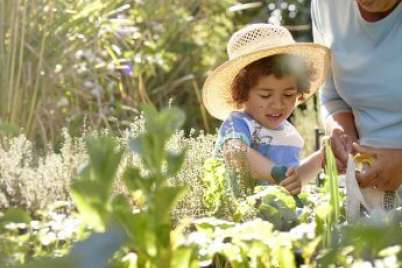
Move to Learn boosts reading and physical literacy for preschoolers
Canadian doctor and university professor John Cairney knows kids need to be active. And he knows that the sooner they begin to develop physical literacy, the more likely it is that they’ll stay active throughout their lives.
But he also understands the importance of academic achievement and learning to read.
With that in mind, he set out to create a program that would give preschoolers a boost in terms of both physical literacy and reading skills.
The program, entitled Move to Learn, started as a study by Cairney through McMaster University and the Boys & Girls Clubs in Hamilton, Ont.
“The intention was to create a developmentally rich program that wasn’t just about physical literacy,” says Cairney.
“The intent of the program was really to incorporate a positive physical literacy experience into a structured program that could be offered to children by trained — but not necessarily expert — volunteers in community-based settings.”
At first, a group of nine children ages 3 and 4, plus caregivers participated for one hour a week for 10 weeks in the free program. Then, a group of 10 children, also 3 and 4, and caregivers participated in the second 10-week offering.
During each session, parents and children spent 30 minutes playing together, following an activity set out by the facilitator.
“It’s not a drop-off program. It’s very interactive for both the parents and the children,” notes Cairney.
“They get very focused activities targeting different aspects of fundamental movement skills,” such as hopping, skipping and throwing balls.
Next, the kids were given 15 minutes of free play. “It’s about completely self-directed movement opportunities,” Cairney says. “We really discourage parents from participating.”
Then, during the final 15 minutes of each class, caregivers and kids came together for a reading circle. “Parents and children each have a copy of the book, and someone sits at the front with a book,” he says.
But the facilitator at the front did more than just read. “She was coaching parents on how to read to children, how to teach pre-literacy skills, word recognition, all these kinds of things,” Cairney says.
And at the end of each class, parents were given a packet of information on how to practice similar skills at home as well as the importance of these skills.
At the beginning and end of each 10-week program, the children were assessed on their pre-literacy and fundamental movement skills.
“Kids improved in both motor skills and literacy skills over time, significantly better,” Cairney points out.
In fact, the two sessions were such a success that Cairney and his team expanded their idea, offering it as a pilot program in four rural Southern Ontario communities, with ages ranging from 23 months to 6 years of age.
Now Cairney, who is part of the Faculty of Kinesiology and Physical Education at the University of Toronto, as well as the Department of Family Medicine at McMaster University, hopes to see Move to Learn one day be offered at communities across Canada.
He and the two graduate students who worked on the program development with him are developing a manual for others to use.
And people can contact him at [email protected] for more information.
Above all, he says, he hopes caregivers and parents see the strong link between physical literacy and cognitive development.
“Pre-literacy is the hook to attract parents who are more concerned about school readiness than fundamental movement skills,” emphasizes Cairney. “But I don’t want people to see physical activity as something separate from other parts of a child’s development.”






Wow this is really interesting! I am wondering if this has been this offered in any of the Early Years programs in Ontario? I am curious about cost as well.
Hi Susan, Not sure about that. I would check the Ontario Early Years web site and maybe your local libraries as well for similar programs as well. In addition, you can contact [email protected] for updates on this specific initiative.
I am student learning support officer (teacher aide). I am helping students who are below average with reading. I am really interested to learn more about your research.
Hi Sharon, Please reach out at [email protected] for more information.
Is this work published? If yes, can you please share the paper. Thanks
Contact Professor John Cairney directly, Paul. His email is in the article.